ESS Lighthouse – Colloids and Interfaces in Food and Pharma (CaIFF)

Are our new scientific partner? If you see opportunities for joint research or research translation, please do not hesitate to contact us after reading the material below.
Vision
The vision of CaIFF is to become an international focal point for harnessing the potential of the European Spallation Source (ESS) and related large-scale facilities to lay the foundation for an in-depth understanding of out-of-equilibrium multi-phase systems and their controlled use in pharmaceutical and food products.
- CaIFF collects all competences required to harness the opportunities of neutron-based techniques for such research, including experimental aspects of small-angle scattering, reflectometry, and tomography, as well as theoretical modelling and data analysis.
- CaIFF engages 16 research groups from University of Copenhagen (UCPH) and Aarhus University (AU) working with neutron- and synchrotron-based methodologies for studies within colloid and interface science, as well as its application in pharmaceuticals and food. Beyond these, project-based collaborations involve research groups at the Danish Technical University and the University of Southern Denmark.
- CaIFF collaborates with ESS and provides a gateway for new users in Denmark wanting to do their first neutron-based experiments, both from industrial research laboratories and academia.
- Beyond experiments, CaIFF contributes to software development in collaborations with ESS Data Management and Software Center (DMSC) by developing new modelling and simulation tools.
- CaIFF is centered around Tenure-Track Assistant Professors (TTs), supported by a tried-and-tested governance model at one of the host Departments.
- CaIFF contributes to next generation researchers by providing PhD training that is: (i) interdisciplinary, (ii) international, and (iii) provides a unifying perspective of out-of-equilibrium multiphase systems and their use in pharmaceuticals and food products, as well as of the use of neutron-based methodologies for studies of such systems.
- International collaborations are an integral part of CaIFF, ranging from an established collaboration with research groups at Lund University playing a central role in ESS and MAX IV, to broad international research collaborations, supported by an international set of key persons in the Lighthouse.
- CaIFF contributes to competence development of Danish industry. It also supports research translation and industrial development, either through industrial research projects or through contract research organizations (GTS) Bioneer:FARMA, FORCE Technology, and Danish Technological Institute.
- CaIFF engages the Danish healthcare sector through involvement in its Scientific Advisory Board, as well as through broader dissemination of research results and implications.
- CaIFF is active in dissemination by:
- publication in high-quality scientific journals
- taking initiatives to workshops and conferences, and
- presence in social media to reach patient organizations, healthcare professionals, and academic/industrial organizations. In addition, activities are directed to school children and youth to inspire these for a career within natural sciences and technology.
- The commitment of the host departments to the long-term viability of CaIFF is mirrored by the considerable co-funding provided, not only over the 5-year duration of the public funding, but also after that through employment of the TTs in permanent positions.
Scientific background and relevance
Colloid and interface science is broadly speaking the study of suspensions, emulsions, foams, gels, complex liquids, and a range of self-assembling soft matter systems. These materials permeate our daily life, from the foods we eat to the pharmaceuticals we need transported to targets in our body. The basic building blocks in soft matter are lipids, surfactants, proteins, polymers, polysaccharides, and nucleic acids. The combination of these defines structures formed from microscopic to macroscopic length scales.
The fundamental understanding of such structures across all length scales, but particularly in the colloidal range (1-1,000 nm), is crucial to tackle key challenges in the fields of colloidal food and pharmaceutical science, including, e.g., the transition from animal to plant-based foods, the understanding of the role of structure on digestion and uptake of pharma- and nutraceuticals, and the design of next-generation smart delivery systems for targeted drug administration.
As an overarching theme, these examples all rely on the interplay between the different classes of building blocks, together forming a multitude of complex out-of-equilibrium multiphase systems that remains difficult to fully understand and control. Although at first sight seemingly unrelated, effects on the colloidal length-scale dictate much of the properties of all these systems. Hence, colloid and interface science provides a uniform scientific framework for these systems.
Furthermore, the main tools needed to decipher these systems are the same across the colloidal field, allowing us to study the organization of the building blocks and how this organization changes during production, storage or heating, as wells as upon eating, digestion and absorption, or upon injection into the body - whether raw ingredients for food or synthetic drug delivery systems.
As such, out-of equilibrium systems are of particular interest and importance in such context, yet such systems remain challenging to study. In this context, methods based on neutrons and X-rays are essential for this purpose, hence ESS will provide unprecedented tools to investigate and solve such challenges.
Addressing the opportunities outlined above, research is organized into five Research Themes:
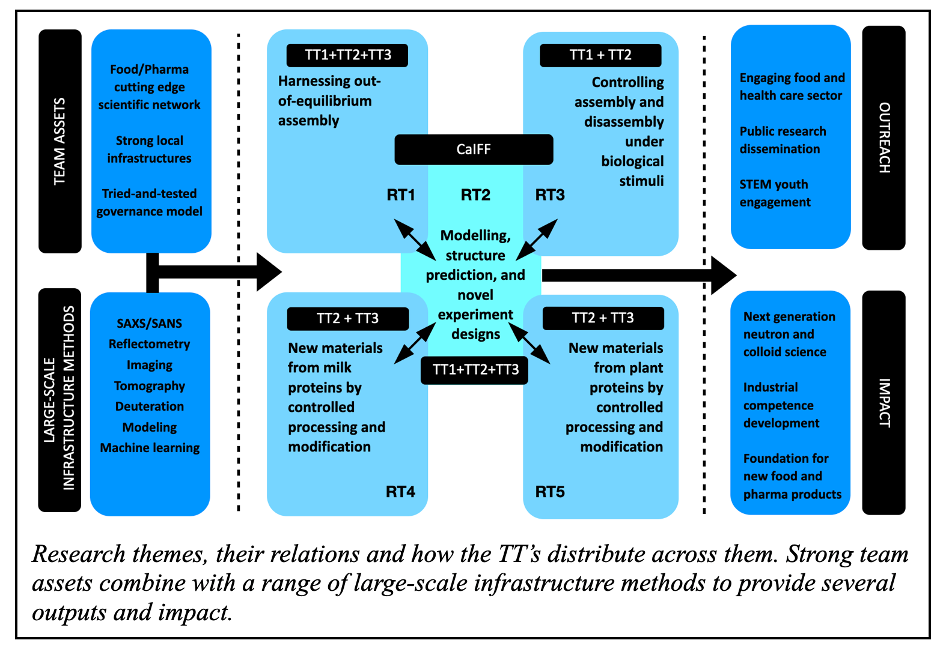
- Harnessing out-of-equilibrium assembly
- Modelling, structure prediction, and novel experiment designs
- Controlling assembly and disassembly under biological stimuli
- New materials from milk proteins by controlled processing and modification
- New materials from plant proteins by controlled processing and modification
Harnessing out-of-equilibrium assembly
Although sample preparation generally plays a secondary role when thermodynamics determines structure formation, processing conditions are of critical importance for controlling out-of-equilibrium assembly.
For the latter, microfluidic and stopped flow approaches provide precise control of component mixing and assembly. For colloidal length scales, time-resolved small-angle X-ray scattering (SAXS) and small-angle neutron scattering (SANS) enable quantitative analysis of transitions in the internal and external structure for various types of systems.
In this RT, we both employ existing and develop new in-line synchrotron SAXS and SANS to monitor kinetics for assembly and disassembly using systems selected from the RTs below. Our ambition also includes design of new sample environments allowing nanoparticle assembly- and disassembly for the systems outlined below, and in response to various environmental and processing factors.
Through this, the RT provides new experimental methodology, as well as in-depth insight into factors controlling the assembly and disassembly in cargo-containing heterogeneous systems, laying the foundation for all subsequent RTs.
Modelling, structure prediction, and novel experiment designs
In scattering experiments, modelling approaches must be applied to extract structural information. This can be done by applying a structure model based on knowledge of the compounds involved, calculation of scattering/reflectivity for the model, and optimizing structural parameters for best agreement with the experimental data.
In addition to using existing models, new ones will be derived in this RT based on molecular dynamics, density functional theory, and coarse-grained simulations. Such approaches also predict the dynamics of systems prepared out-of-equilibrium, e.g. by applying deformations, and also provide key input to experiment design.
In this RT, we aim to collaborate with DMSC to develop new analysis pipelines able to handle the complexity of multicomponent systems.
This includes:
- direct analysis of scattering data augmented with machine learning and multivariable methods.
- molecular simulations to predict assembly properties.
- experiment design matching the superior possibilities of the ESS by combining McStas instrument simulations and complex deuteration scenarios.
- holistic multi-scale modeling aiming to predict higher order quantities like mouthfeel from structural models and experiments. Through this, the RT supports experimental work in all other RTs.
Controlling assembly and disassembly under biological stimuli
Many lipid-, polymer-, and surfactant-based assembly systems display pronounced structural changes in response to various stimuli relevant for pharmaceuticals and food products. Widely investigated structural responses include those to temperature, pH, and ionic strength. Recently, more specific biological responsiveness has been reached by coupling structural changes to specific recognition provided by, e.g., enzyme exposure or targeting moieties such as antibodies or aptamers.
In this RT, focus is placed on the latter type of responsiveness, as this allows, e.g., disease-specific drug targeting and precision nutrition.
The RT contributes to addressing key pharmaceutical challenges, including:
- difficulties of combatting intracellular infections, where intracellular delivery of antimicrobial peptides provide real opportunities.
- RNA delivery, where therapeutic application of mRNA requires intracellular uptake to be dramatically improved compared to the ≈1% presently achieved.
- designing delivery systems for antibodies recognizing intracellular targets, presently a major bottleneck in the development of such therapeutics.
Apart from investigations into the properties of the cargo-containing assembly systems outlined above by SAXS/SANS, key efforts will be dedicated to neutron reflectometry (NR) and complementary studies of the interaction of loaded carriers with outer cell and endosomal membranes, key barriers that must be overcome for the cargo molecules to be able to achieve their action.
New materials from milk proteins by controlled processing and modification
Whey protein and caseins from milk are complex molecules with unique structural properties and high nutritional value, holding major potential also within in drug delivery. There are, however, significant challenges relating to the isolation and fractionation of such proteins without destroying their properties, precluding the development of new high-value products.
Methods such as membrane filtration, chromatography, and microfiltration are presently applied to ensure purity and functionality of the extracted proteins, with remaining challenges to reach high yield. In addition, solution properties such as temperature, ionic strength, type of ions, and pH all influence protein stability.
Similar challenges are met when attempting to produce non-animal-based milk from recombinant proteins. Addressing this, studies in this RT combines studies of phase diagrams under different solution conditions with kinetic studies for reaching different structures. Here, scattering studies of structure formation offer powerful opportunities. In addition, various advanced deformation techniques are combined with SANS and SAXS to reach a fundamental understanding of the system in and out-of-equilibrium.
New materials from plant proteins by controlled processing and modification
The food of the future will be based largely on plant-derived ingredients, making these desirable to separate, handle, and modify. Plant-based proteins are also interesting as drug-delivery systems, e.g., drug-loaded electro-spun fibers used for tissues for wound treatment.
However, the development of new products based on plant proteins faces significant challenges due to water insolubility, limiting their functional performance in, e.g., plant-based meat and milk products, or in the choice of solvents that can be used for electro-spinning.
Separating such proteins from the plant matrix is difficult because of their strong association with lipids and polysaccharides. Furthermore, modifying these proteins to enhance their texture, flavor, and mouthfeel - critical for creating convincing plant-based food alternatives - adds another layer of complexity. This calls for innovative processing and formulation strategies.
Within this RT, SANS and SAXS are used for studying plant protein solubility and structure formation under different solution conditions, as well as their interaction with plant lipids and polysaccharides. SANS and SAXS also allow real-time monitoring of structural changes during processing, such as heat treatment or enzymatic modification, key for the design of plant-based ingredients for plant-based meat and dairy alternatives.
Successful involvement of ESS and DMSC is of key importance to CaIFF.
In relation to ESS, CaIFF seeks to ensure tight relations though:
- participation of ESS representatives in the Executive and the Operational Steering groups of CaIFF.
- collaboration in specific projects.
- supporting sample environment development and the ESS deuteration facility DEMAX.
- mutual beamtime proposals and experiment design.
Similarly, we seek to involve DMSC widely in our activities through collaborations, e.g., involving development of new modelling and simulation tools, but also linking to experimental work through experimental design, data analysis, and data accessibility.
Together, the Department of Pharmacy (IF), UCPH, the Department of Food (FOOD) UCPH, the Niels Bohr Institute (NBI), UCPH, as well as iNANO, the Department of Food Science, and the Department of Chemistry, AU, provide a strong research environment that will allow us to tap into related activities and research infrastructure.
Thus, IF and the Department of Drug Design and Pharmacology together form one of the strongest research environments at UCPH, ranked 7th globally. Key aspects of this are:
- A strongly international research environment (>40% of all the academic staff (≈15 Assist. and ≈40 Profs./Assoc. Profs.) having international background),
- Active recruitment of international top researchers combined with active promotion of Danish researchers.
- An interdisciplinary approach to link pharmaceutics with new opportunities in natural sciences and technology,
- Strong industrial and clinical networks, and (v) strong infrastructure for experimental research.
Apart from CaIFF, IF currently hosts 4 centers, founded by the Novo Nordisk Foundation, the Lundbeck Foundation, and the LEO Foundation.
To strengthen research education, PhD students are enrolled in the Research School DRA, Drug Research Academy, holding ≈150 PhD students and organizing, e.g., PhD courses, workshops, and meetings for PhD students, as well as ULLA, a European consortium of pharmaceutics departments/schools supporting PhD training and exchange.
The Department of Food Science at UCPH
is recognized leader in its field, ranked No. 1 in Denmark, No. 2 in Europe, and No. 24 worldwide in Life and Earth Sciences.
Its vision is to contribute to the production of sustainable and healthy food by generating fundamental knowledge to secure a future food supply of high quality, reducing the environmental impact of food production, and developing green food production systems.
An interdisciplinary approach for this is bolstered by research groups crossing sectional boundaries, emphasizing collaboration and innovation. Research at UCPH FOOD is driven by large grants and close collaboration with the food industry, ensuring that the department remains at the forefront of food science innovation. The Department has ≈100 PhD students and post docs and a faculty of ≈ 50 Professors/Associated Professors.
Together with the Niels Bohr Institute (NBI), the department hosts the CXC: Cross-disciplinary X-ray Center. NBI also has strong expertise in X-ray and neutron science in general and CaIFF therefore has broad interfaces to the scattering community at NBI and UCPH.
The Interdisciplinary Nanoscience Center (iNANO)
promotes synergistic interactions that cross traditional scientific boundaries between physics, chemistry, molecular biology, biology, and medicine.
iNANOschool is a graduate school of international stature with ≈100 PhD students enrolled, providing interdisciplinary training in nano-science and -technology. iNANO has ≈52 Profs./Assoc. Profs. and ≈90 Postdoctoral Research Fellows/Ass. Profs.. Similarly, the Department of Chemistry (DC) has a strong focus in interdisciplinary research and has hosted 6 centers of excellence (funded by the Danish Research Foundation), providing a highly international atmosphere. It is closely connected to iNANO and the home to 35 Profs., Assoc. Profs., and Ass. Profs., ≈100 PhD students, and ≈50 postdoctoral fellows.
The Department of Food Science at AU, in turn, spans a wide range of topics within food science, from basic research to applied science that impacts industry and society. The department is staffed by a diverse and highly qualified team: around 35 Profs./Assoc. Profs., and 10-15 Ass. Profs. The department also hosts 20-30 postdocs and 50-60 PhD students.
Collectively, the 3 host environments have strong research infrastructure central to CaIFF. At IF, relevant instrumentation includes, e.g., ATR-IR, QCM-D, SAXS, strong analytical chemistry facilities, and facilities for cell and bacteria experiments.
At FOOD/NBI-UCPH, local infrastructure includes CXC, as well as the full scope of methods relevant to food science, from production and processing facilities to state-of-the-art fermentation labs, in vitro digestion setups, rheological instruments, light scattering, and microscopy and sensory evaluation.
At NBI, there is access to modelling and physical chemistry characterisation labs. Furthermore, the Department of Chemistry and iNANO at AU hosts a very strong infrastructure platform, including, e.g., electron microscopy, SAXS, synchrotron and CD.
Also of important for CaIFF is Aarhus X-ray Imaging Alliance and its X-ray 3D imaging facility, as well as the scattering laboratory which includes dynamic and static light scattering and two in-house state-of-the-art SAXS instruments. Together, these resources substantially contribute to CaIFF by providing possibilities for seamlessly scissoring local experiments, experiments at large-scale-facilities, and modelling.
Team - Dept. Pharmacy (UCPH)
Prof. Martin Malmsten
Prof. Anette Müllertz
Prof. Ben Boyd (affiliated professor)
Prof. Vito Foderà
Prof. Anan Yaghmur
Assist. Prof. Federica Sebastiani
New Tenure-Track Assistant Professor (Under recruitment)
Team – FOOD/Niels Bohr Institute (UCPH)
Assoc. Prof. Jacob Kirkensgaard (joint with Niels Bohr Institute)
Prof. Lilia Ahrné
Prof. Serafim Bakalis
Assoc. Prof. Heloisa Bordallo
Assoc. Prof. Jens Risbo
Assoc. Prof. Amin Doostmohammadi
Assoc. Prof. Poul Martin Bendix
Ass. Prof. Giovanni Barone
Ass. Prof. Norbert Raak
Ass. Prof. José Bonilla
New Tenure-Track Assistant Professor (Under recruitment)
Team – Dept. Chemistry, iNANO, and FOOD (AU)
Prof. Jan Skov Pedersen
Prof. Daniel E. Otzen
Prof. Brigitte Städler
Prof. Milena Corredig
TT Ass. Prof. Ilke U. Ünalan
New Tenure-Track Assistant Professor (Under recruitment)
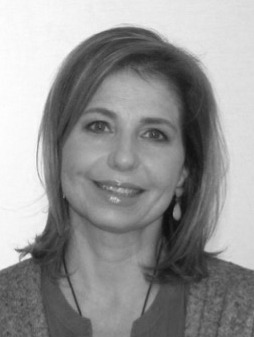
Debora Berti
University of Florence
Debora Berti is Full Professor of Physical Chemistry at the University of Florence, where she also serves as Vice President. Her research focuses on the Physical Chemistry of Soft Matter and interactions at the nano-bio interface to inform the design of synthetic hybrid systems with precise structural control for biomedical and biotechnological use.
Debora has authored or co-authored over 190 scientific publications, including research papers, reviews, and book chapters. She is the co-editor of the Journal of Colloid and Interface Science and serves on the editorial boards of several prestigious journals.
Additionally, she was the President of the European Colloid and Interface Society from 2013 to 2015. Her contributions to the field include editing the book Colloidal Foundations of Nanoscience, published by Elsevier in 2014.
Within the Scientific Advisory Board, Prof. Berti will provide expertise in lipid self- and co- assembly, as well as within nanoparticle-membrane interactions.

Remko Boom
University of Copenhagen and Wageningen University
Remko Boom received his PhD degree (highest honours) at Twente University in 1992. From 1992 to 1998 he worked for Unilever Research. In 1998, he was appointed as full professor of Food Process Engineering at Wageningen University.
In 2025 he was appointed as full professor at University of Copenhagen. He has to date successfully supervised and graduated 85 PhD students and co-authored more than 490 scientific publications.
Within the Scientific Advisory Board, Prof. Boom will provide expertise on the relation between the multiscale structure of complex food materials and their functional properties, during preparation of food ingredients and of formulated foods, as well as during consumption and digestion.

Stefan Förster
RWTH Aachen University and Forschungszentrum Jülich
Stephan Förster received his Ph.D. in 1992 at the Max-Planck-Institute of Polymer Research in Mainz and his Habilitation in 1999 at the Max-Planck-Institute for Colloids and Interfaces in Potsdam.
He has been Full Professor in Physical Chemistry at the Universities of Hamburg and Bayreuth. Since 2017 he is Director at the Jülich Centre for Neutron Science (JCNS) at Forschungszentrum Jülich, and Professor in Physical Chemistry at RWTH Aachen University.
Particular research projects focus on polymers, nanoparticles, colloids, food and pharmaceutical formulations. Within the Scientific Advisory Board, Prof. Förster will provide expertise on the application of neutron and X-ray methods in the fields of soft and complex materials.
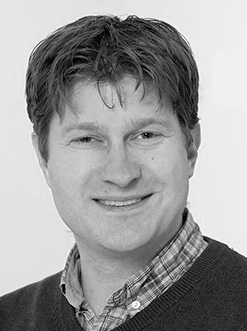
Nikolaj Zangenberg
Within the Scientific Advisory Board, Dr. Zangenberg will provide a perspective on research translation towards industrial application.
Dr. Nikolaj Zangenberg is Director of the Big Science Center at the Danish Technological Institute (DTI).
His work focuses on bridging the gap between academic research and industrial applications, particularly within advanced materials and neutron/synchrotron characterization - often via publicly funded national or European projects.
In addition to his project leadership, Dr. Zangenberg actively contributes to the European advanced materials ecosystem as a member of the European Materials Modelling Council (EMMC), the European Materials Characterisation Council (EMCC) and a contributor to the Advanced Materials 2030 initiative - that has now become the Innovation Advanced Materials Initiative (IAM-I), where he represents DTI.
He also serves as convenor for a CEN (European Committee for Standardization) working group focused on non-destructive material investigations. He also serves on the board of the LINX association.
Jacob Øster
Within the Scientific Advisory Board, Dr. Øster will provide a clinical perspective as well as access to a broad contact net of clinicians.
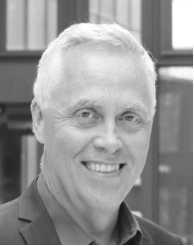 |
Professor Martin Malmsten
Research Director and Principal Investigator
Martin Malmsten is Professor and Director at the University of Copenhagen. Previously, he was Professor and Head of Department at Uppsala University, and before that CEO of YKI, Institute for Surface Chemistry AB.
His current research interests include antimicrobial nanomaterials and nanomaterials for drug delivery, amphiphilic peptide therapeutics, and cutaneous drug delivery. In addition to his academic work, Malmsten is active within research translation, being co-inventor on 16 patent and patent application families, as well as co-founder for three start-ups.
Malmsten has received numerous research awards, including the ACS Langmuir Lecture Award and the Nordblad-Ekstrand Medal. He is elected member of the European Academy of Sciences, the Royal Swedish Academy of Sciences (Nobel Prize awarding academy), the Royal Swedish Academy of Engineering Sciences (Chairman of Chemical Engineering 2018-2020), and the Danish Academy of Technical Sciences.
In addition, Malmsten is Fellow of the Royal Physiographic Society, Fellow of the Royal Chemical Society, and Guest Professor at Lund University. He is also Editor-in-Chief of the Journal of Colloid and Interface Science, one of the leading journals within colloid and interface science.
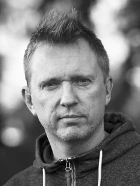 |
Jacob Kirkensgaard
Principal Investigator
Jacob Kirkensgaard is heading the Structural Food Physics and Soft Matter Self-Assembly Group at the University of Copenhagen Nanoscience Center employed in a joint position between the Dept. Of Food Science and the Niels Bohr Institute.
His expertise lies within X-ray and neutron scattering techniques both experimentally and in terms of advanced data analysis and computational modeling.
His research is centered around mesoscale self-assembly and the formation of geometrically and topologically complex structures in soft matter systems, ranging from fundamental studies of polymers to biological membranes, food and colloids, pharmaceutical systems, and energy applications.
 |
Professor Jan Skov Pedersen
Principal Investigator
Jan Skov Pedersen is Professor of Physical Chemistry at Department of Chemistry and Interdisciplinary NanoScience Center at Aarhus University.
His research focuses on interactions between proteins/enzymes and surface-active molecules, including food and drug delivery systems, and the time-development of processes that lead to self-organization in such systems.
He has extensive experience with neutron scattering from his time as Senior Scientist at Risø National Laboratory (1988-2000) and with X-ray scattering from his time at Aarhus University (since 2000), where he has built up a highly competitive X-ray scattering laboratory.
Jan Skov Pedersen has special expertise in small-angle scattering data analysis and has developed several models and analysis methods.
His work also includes instrument optimization and design. Jan Skov Pedersen serves in several international advisory and evaluation committees.
For his research, he received the Carlsberg Chemistry Prize in 2007 and ‘Elastyrenprisen’ (Danish Polymer Prize) in 2011.
Contributions to industry
Our researchers are involved in extensive industrial collaborations of relevance for the CaIFF initiative. Several of these collaborators already have scattering activities, however, CaIFF ensures access to cutting-edge expertise and state-of-the-art facilities, which are essential for maintaining a competitive edge in their respective industries.
Collaborating with a network that attracts top-tier researchers skilled in these sophisticated analytical techniques allows companies to accelerate their innovation pipelines, reduce time-to-market for new products, and enhance the quality and performance of their offerings.
In addition, CaIFF has an important role in contributing to the competence development of Danish industry relating to large-scale facilities.
When suitable, industrial collaborations and development based on research within CaIFF will benefit from already established infrastructure for this through Bioneer:FARMA, as well as by the support from FORCE Technologies and Danish Technological Institute, all authorised GTS providers.
While focus of CaIFF lies on pharmaceutical and food industries, the long-term potential goes beyond these and include also related areas such as personal care, cosmetics, and agricultural products areas.
Another important interface is that towards the healthcare sector. To ensure a productive dialogue, Region Hovedstaden/ Rigshospitalet participates in the Scientific Advisory Board of CaIFF, where it is able to communicate with our researchers regarding patient perspectives, as well as opportunities for collaboration with clinicians.
In addition to this, IF collaborates with a range of hospitals in Denmark, leads a Center focused on regulatory aspects of pharmaceutical products (Copenhagen Center for Regulatory Science), and interacts with international health organizations through the WHO Collaborating Center for Research and Training in Patient perspective on Medicines Use.
While not being part of CaIFF, these partners may be used as a platform for dissemination to the healthcare sector, and for discussions for research collaborations with clinicians.
The involvement of CaIFF researchers in undergraduate, graduate, and life-long learning educational programs provides opportunities for strengthening colloid and interface science in undergraduate education, together with its importance for pharmaceuticals and food products. It will furthermore broaden the realization of the many commonalities between these two areas in research and development.
Together with supervision of Master students, such active involvement in teaching is important for reaching the strategic objective of providing a high-quality, holistic training platform based on research related to CaIFF.
Publication and research dissemination
Dept. Pharmacy (UCPH)
Prof. Martin Malmsten
Prof. Anette Müllertz
Prof. Ben Boyd (affiliated professor)
Prof. Vito Foderà
Prof. Anan Yaghmur
Assist. Prof. Federica Sebastiani
New Tenure-Track Assistant Professor (Under recruitment)
FOOD/Niels Bohr Institute (UCPH)
Assoc. Prof. Jacob Kirkensgaard (joint with Niels Bohr Institute)
Prof. Lilia Ahrné
Prof. Serafim Bakalis
Assoc. Prof. Heloisa Bordallo
Assoc. Prof. Jens Risbo
Assoc. Prof. Amin Doostmohammadi
Assoc. Prof. Poul Martin Bendix
Ass. Prof. Giovanni Barone
Ass. Prof. Norbert Raak
Ass. Prof. José Bonilla
New Tenure-Track Assistant Professor (Under recruitment)
Dept. Chemistry, iNANO, and FOOD (AU)
Prof. Jan Skov Pedersen
Prof. Daniel E. Otzen
Prof. Brigitte Städler
Prof. Milena Corredig
TT Ass. Prof. Ilke U. Ünalan
New Tenure-Track Assistant Professor (Under recruitment)
Contact

Research Director and
Principal Investigator
Professor Martin Malmsten
martin.malmsten@sund.ku.dk
+45 31 49 92 03

Principal Investigator
Associate Professor Jacob Kirkensgaard
jjkk@food.ku.dk
+45 23 74 68 63

Principal Investigator
Professor Jan Skov Pedersen
jsp@chem.au.dk
+45 87 15 59 21
Events
-
5 Feb. 2026, 15:00-16:15
CaIFF Webinar: Pascal Bertsch
-
4 Dec. 2025, 15:00-16:15
CaIFF Webinar: Professor Calum Drummond
-
26 Nov. - 27 Nov. 2025
Colloids and Interfaces in Food and Pharma
-
6 Nov. 2025, 15:00-16:15
CaIFF Webinar: Professor Ben Boyd
-
2 Oct. 2025, 15:00-16:15
CaIFF Webinar: Professor Karen Elder
-
18 Sept. 2025, 13:00-17:00
Inauguration of the ESS Lighthouse: Colloids and Interfaces in Food and Pharma (CaIFF)
